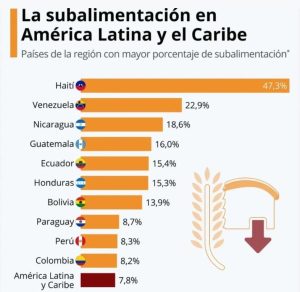Santo Domingo — From the age of 60 onwards, the upward curve that increases the probability of a cerebrovascular accident ( CVA ) begins. However, in recent years, episodes have been observed in patients between 15 and 48 years of age.
This is according to Dr. José Joaquín Puello, a professor of medicine in the field of neurosurgery, who received a tribute this Saturday for his career during the National Symposium on Comprehensive Stroke Management, organized by the Cruz Jiminián Catheterization, Arrhythmia, and Pacemaker Unit.
During his speech, Puello highlighted that approximately 16 to 20 million people worldwide suffer a stroke each year, a figure that is on the rise, with the estimate being that it will reach 77 million by 2030.
In the case of the Dominican Republic, he stated that the prevalence is 183 patients per 100,000 inhabitants, which leads to an estimate that between 20,000 and 22,000 cases occur each year, with a high mortality rate.
“Of every 183 patients with their first stroke , 90 die. We’re talking about an epidemic,” he said.
A stroke, also known as an ictus, is the second cause of death in the country, but it is also the first cause of disability.
Receive a weekly summary of the most important news stories for the Dominican diaspora and the United States in your inbox.
It occurs when there is an interruption in blood flow to the brain, and can be of two types:
- Ischemic stroke occurs in 85% of cases when a clot blocks the flow of blood and nutrients, also known as a cerebral infarction.
- Hemorrhagic stroke, commonly known as a stroke, occurs in 15% of cases and occurs after a rupture of blood vessels.
Luis Eduardo Aybar, director of the Sanitary City, also expressed concern about comorbidities that increase risk factors. He cited these as high blood pressure, diabetes, a sedentary lifestyle, smoking, and a high-fat diet.
“We are facing a true pandemic. Strokes are becoming the number one most important public health disorder ,” he added.
The doctor indicated that he had observed an increase in cognitive disorders after coronavirus infections in 2020, where 38% of patients who were hospitalized with Covid continue to present after-effects to this day, as well as an increase in kidney diseases that keep hemodialysis units full.
1.9 million neurons die every minute
Emergency physician Abilquis Escoto explained the “ABCs of stroke ,” stating that for every minute a patient goes without treatment, they lose 1.9 million neurons.
“For every hour, the brain ages 3.6 years,” he added.
Escoto cited as serious the fact that between 30 and 40% of patients do not recognize the symptoms of a stroke (dizziness, double vision, loss of balance, distorted face), meaning that in the last three months, 90% of patients admitted to the Cruz Jiminián Unit arrive outside the response window.
Similarly, he compared local data with other countries, highlighting that in Europe, between 20 and 35% of patients receive acute treatment for strokes. At the same time, in the Dominican Republic, the figure barely reaches between 2% and 5%.
“Fifty percent of strokes are prevented when blood pressure is kept under control,” he warned.
High cost of treatment
Dr. Minelly Rodríguez, in her talk titled “The Reality of Stroke in the Dominican Republic,” commented that the cost of treating a patient for a first stroke can reach 700,000 pesos, including the Intensive Care Unit (ICU), treatment, and subsequent rehabilitation, representing a burden on the health system of up to 54 billion pesos each year.
The first warning signs will be a patient whose speech is slurred, whose mouth is twisted, or whose half of the body is dead.
Rodríguez urged patients not to stay home, as Dominicans typically self-medicate or drink a tea recommended by a family member or neighbor, and when it comes to stroke, every second counts.
Among the limitations for optimal care, he stated:
- Shortage in specialized stroke units.
- Limited timely access to thrombolysis or thrombectomy, treatments used to dissolve or remove blood clots in the brain, exceeding the 4.5-hour window after the event occurs.
- Patients living in rural areas and remote provinces are unable to reach the hospital in time because most stroke centers are located in Santo Domingo and Santiago.
- There is a need to improve health insurance coverage for acute and post-stroke care.
Primary care
For his part, Minister of Public Health Víctor Atallah commented that since last year, the focus has been on prevention and primary care to detect patients before a stroke occurs.
To this end, “More Health and Hope” campaigns are being held in various provinces across the country, offering consultations and medical imaging. Improvements have been made to the Hearts Strategy for patients with hypertension and diabetes, and clinical protocols for managing these chronic non-communicable diseases have been strengthened.
“There’s no time for a stroke; we have to get to work,” he said, referring to the window of action that lasts just 4.5 hours after a patient begins to show symptoms of a stroke.
Stroke Prevention
To prevent a stroke, it is crucial to recognize the warning signs and respond promptly. Control your blood pressure, blood sugar, and cholesterol levels. Eat a healthy diet, exercise regularly, and get plenty of sleep. Avoid excessive tobacco and alcohol use, and keep stress under control. If you experience any symptoms, seek immediate attention: with stroke, time is brain.

